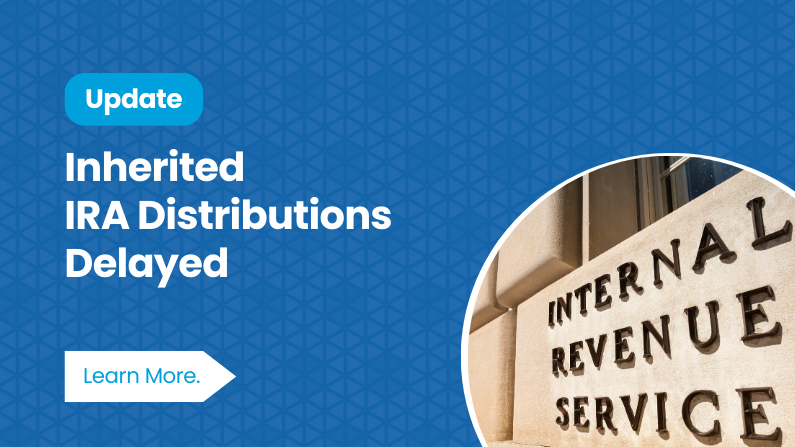July 19, 2023
SECURE Acts 1.0 and 2.0 rewrote the rulebook for inherited IRA and 401(k) beneficiaries. While spouses continue to have options for stretching mandatory distributions over their lifetimes, most non-spouse beneficiaries no longer have that luxury. With few exceptions (beneficiaries who are minor children, disabled or chronically ill, or <10 years younger than the decedent), most non-spouse beneficiaries who inherited an IRA or 401(k) after 12/31/19 must withdraw the entire account balance within 10 years. The more limited 10-year clock is unfortunately crystal clear, but the biggest lingering question has been whether beneficiaries can simply wait until the end of the 10th year to withdraw the entire balance (how most interpreted SECURE Act 1.0) or if annual withdrawals are required (as clarified in SECURE Act 2.0).
The IRS remains undecided as it weighs comments and opinions on the matter and is hence waiving penalties for beneficiaries who fail to take a distribution in 2023, as was the case in 2022. It is important to note that the recent Notices from the IRS do not say a distribution is not required, simply that the taxpayer will not be penalized for failing to take it.
Generally, this opens the door for Advisors to recommend forgoing distributions and instead leaving assets in an IRA or 401(k) as long as possible to take advantage of tax-deferred growth. However, annual distributions may still be prudent for some regardless of the IRS’s stance on requiring them as they would help avoid a ballooned, one-time distribution at the end of the 10th year that could potentially vault a taxpayer into a much higher tax bracket. As with everything we do in the world of financial planning, every situation is unique, but substantial tax savings may be possible for those actively managing their distribution strategy over time.
Below you will find exact wording from SECURE Act 2.0, IRS Notice 2023-54, and a summary of Eligible Designated Beneficiaries (spouses, minor children, and others who are exceptions to the 10-year rule) vs. Designated & Non-Designated Beneficiaries.
SECURE Act 2.0:
- The 10-year rule applies regardless of whether the employee dies before the required beginning date.
- The beneficiary of an employee who died after the employee’s required beginning date must take an annual RMD beginning in the first calendar year after the calendar year of the employee’s death.
- The remaining account balance must be distributed by the 10th calendar year after the calendar year of the employee’s death.
- When an eligible designated beneficiary who is a minor child of the employee reaches the age of majority, that child will no longer be considered an eligible designated beneficiary and the remainder of that child’s portion of the employee’s interest in the plan must be distributed within 10 years of that date.
IRS Notice 2023-54
- Guidance for certain taxpayers who did not take a specified RMD for 2023: To the extent a taxpayer did not take a specified RMD, the IRS will not assert that an excise tax is due.
For more clarity on how this may affect you, please reach out to your advisor.
Disclosure: The information provided here is general in nature and is shared for information purposes only; nothing herein should be interpreted as investment or tax advice. Any and all tax laws and/or specific tax rates referenced are subject to change. It should not be assumed that future performance of any specific investment or investment strategy will be profitable. Always consult your CPA/tax advisor/attorney (or reach out to us;) to discuss your specific situation. All investments carry the risk of loss, including the permanent loss of principal. Past performance is no guarantee of future results.

